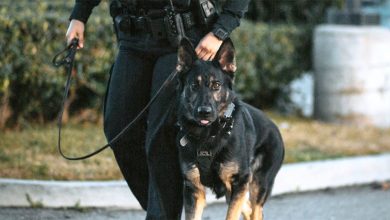Is Forcing Fido to Feed Really the Right Choice? An Exploration of the Ethical Dilemma of Force-Feeding Dogs

1. Introduction
Force feeding a dog is an issue that has been debated for some time, as there are both risks and benefits associated with the practice. In this article, we will explore the potential pros and cons of force feeding a dog and provide guidance on how to do it safely, if necessary.
2. Reasons Why Force Feeding is Not Recommended
Force feeding a dog can be dangerous, especially when done incorrectly or without proper guidance from a qualified veterinarian. Dogs can aspirate food or liquid into their lungs, leading to pneumonia or other serious respiratory issues. Force feeding can also cause stress and anxiety in the dog, making them less likely to eat on their own in the future. Additionally, it is important to consider whether force feeding is actually necessary for the particular situation – in some cases, allowing the dog’s appetite to return naturally may be more beneficial than forcing them to eat.
3. Reasons Why Force Feeding May Be Necessary
In some cases, however, force feeding may be necessary for a dog’s health and wellbeing. This may be due to an illness or injury that prevents them from eating on their own, or due to extreme weight loss caused by not eating enough. In these cases, force feeding may be necessary to ensure that they are receiving adequate nutrition and hydration while they recover from their illness or injury.
4. What to Consider Before Force Feeding a Dog
Before attempting to force feed a dog, it is important to consult with your veterinarian first – they will be able to provide advice on whether it is safe and appropriate in your particular situation. Additionally, you should ensure that you have all of the necessary supplies on hand before beginning the process – this includes any food or liquid that you plan on giving your dog as well as any additional equipment such as syringes or tubes that may be needed depending on your method of force feeding.
5. How to Properly Force Feed a Dog
If you decide that force feeding is necessary for your particular situation, there are several methods available for doing so safely and effectively:
• Syringe-feeding: This method involves using an oral syringe filled with food or liquid that can then be administered directly into your dog’s mouth in small amounts at a time until they have eaten enough food/liquid for their needs.
• Tube-feeding: This method involves using either an esophagostomy tube (a tube inserted through the side of their neck) or gastrostomy tube (a tube inserted directly into their stomach) which can then be used to administer food/liquid directly into their digestive system in larger amounts than syringe-feeding allows for.
• Spoon-feeding: This method involves manually spoon-feeding your dog small amounts of food/liquid at a time until they have eaten enough for their needs – this method should only be used if other methods are not possible due to physical limitations of your pet (e.g., if they cannot open their mouth wide enough for syringe-feeding).
6 Potential Complications of Force Feeding a Dog
While all of these methods can be effective when done correctly with proper guidance from a qualified veterinarian, there are still potential risks associated with force feeding including aspiration pneumonia (caused by food/liquid entering the lungs), regurgitation (causing choking), discomfort/pain during insertion of tubes/syringes due incorrect technique/placement and even death if not done correctly or monitored closely enough during administration of food/liquid into the digestive system via tubes/syringes etc.. It is therefore essential that all owners take extra care when attempting any form of forced feeding and seek professional advice beforehand if possible – never attempt forced feeding without consulting with your vet first!
7 Alternatives to Force Feeding a Dog
In some cases where forced-feeding isn’t deemed medically necessary by vets but owners are concerned about weight loss/appetite issues in their dogs then there are alternative approaches which can help stimulate appetite such as adding wet foods/treats which contain higher concentrations of fat & protein than regular kibble diets & providing more frequent meals throughout day rather than one large meal per day etc… Other options include administering supplements such as omega 3 fatty acids which help support healthy skin & coat condition & improve overall well being; adding probiotics which aid digestion & absorption of nutrients; introducing variety into diet including different flavours & textures; offering smaller portions more frequently throughout day; increasing exercise levels; introducing interactive toys; scheduling regular walks etc… All these approaches may help stimulate appetite & improve overall health & wellbeing without resorting to forced feeding techniques which carry greater risks & potential complications if done incorrectly..
8 Conclusion
Forced-feeding dogs should always be considered carefully & only used when medically necessary after consultation with qualified vet professionals who will advise accordingly based on individual circumstances.. There are alternatives available which may help stimulate appetite but ultimately forced-feeding should only ever be used as last resort after careful consideration..
9 Resources and Further Reading
• https://vcahospitals.com/know-your-pet/force-feeding-your-dog
• https://www.petmd.com/dog/nutrition/evr_dg_force_feed_your_dog
• https://vcahospitalsunboundmedicinecom2226f0b664f4c8eeb8d181040ed7f3fd
• https://www1ncbiNLMnihgov33661925



